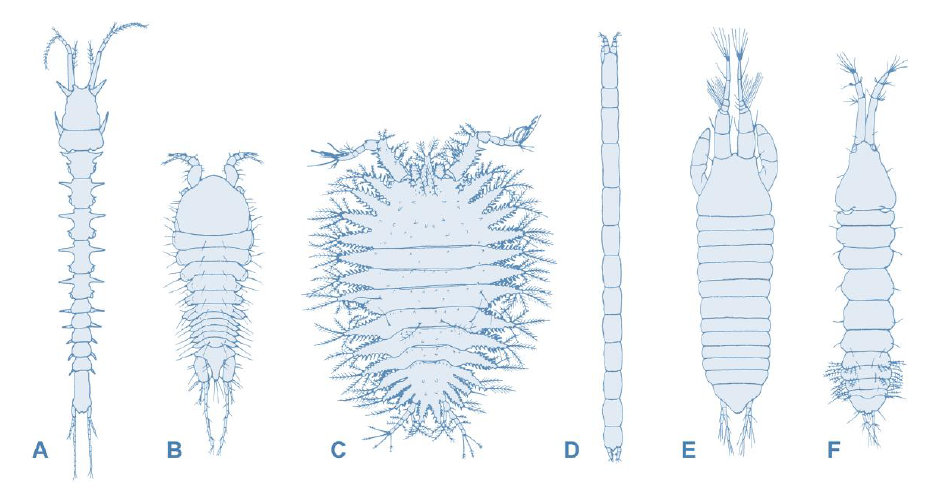Séminaire 3 juillet 2025
 The secret life of tanaids, the ants of the sea
The secret life of tanaids, the ants of the sea
Emma Palacios Theil, Dept. of Invertebrate Zoology and Hydrobiology, University of Lodz, Poland
Jeudi 3 juillet 2025 à 13 heures, en salle 303
Tanaidaceans are a highly diverse group of marine crustaceans. They are peracarids and as such they lack a free-living larval stage: females brood their embryos in a pouch, from which the offspring hatch as mancas, a pre-juvenile stage with limited swimming abilities. Most of these small invertebrates have benthic lifestyles and many of them dwell in tunnels in the marine sediment or build tubes with their own silk-spinning glands. In addition, deep-sea currents are (supposedly) relatively slow. Consequently, deep-sea tanaids have been assumed to have restricted mobility capabilities and therefore small distribution ranges, high degrees of population structure, and relatively high rates of speciation. Until now.
- extrait:
- lien_externe:
- titre:
- intervenant:
- date:
- kc_data:
- a:8:{i:0;s:0:"";s:4:"mode";s:0:"";s:3:"css";s:0:"";s:9:"max_width";s:0:"";s:7:"classes";s:0:"";s:9:"thumbnail";s:0:"";s:9:"collapsed";s:0:"";s:9:"optimized";s:0:"";}
- kc_raw_content:
 The secret life of tanaids, the ants of the sea
The secret life of tanaids, the ants of the seaEmma Palacios Theil, Dept. of Invertebrate Zoology and Hydrobiology, University of Lodz, Poland
Jeudi 3 juillet 2025 à 13 heures, en salle 303
Tanaidaceans are a highly diverse group of marine crustaceans. They are peracarids and as such they lack a free-living larval stage: females brood their embryos in a pouch, from which the offspring hatch as mancas, a pre-juvenile stage with limited swimming abilities. Most of these small invertebrates have benthic lifestyles and many of them dwell in tunnels in the marine sediment or build tubes with their own silk-spinning glands. In addition, deep-sea currents are (supposedly) relatively slow. Consequently, deep-sea tanaids have been assumed to have restricted mobility capabilities and therefore small distribution ranges, high degrees of population structure, and relatively high rates of speciation. Until now.
